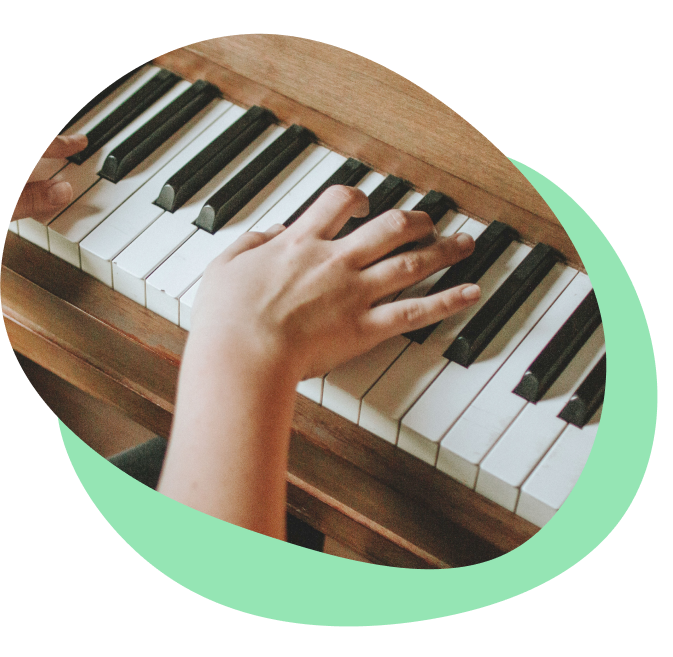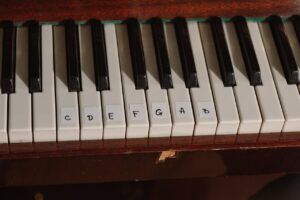The G minor chord is one of those chords that adds a sense of depth and complexity to your music. Want to get to grips with this chord? Skoove is here to help. In this article we will look at how to play G minor, all of its inversions and which fingers to use for each. We will also take a look at some fun chord progression and some great songs that use a G minor so you can get playing right away!
How to play the G minor chord in root position?
To play the G minor chord, you’ll need three notes: G, B-flat, and D. Start by finding G, the white key just after the first of the three black keys. Then add Bb (the black key) and D (a white key above it). Press them together, and you’ll have a G minor triad.
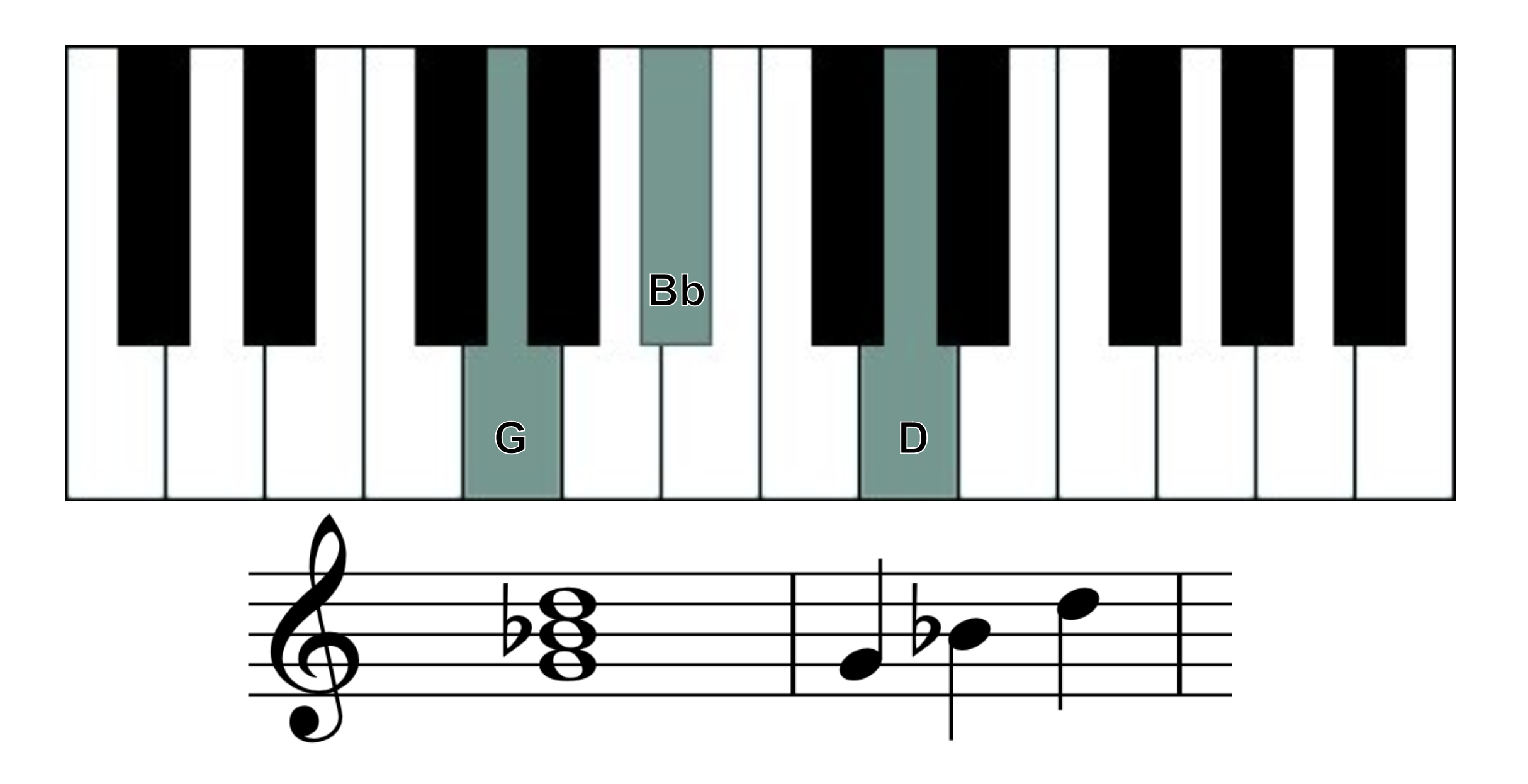
The G minor chord consists of three notes G, Bb and D.
These notes are called: the root (G), third (Bb) and fifth(D). Together, they create a full and rich minor sound.
To play this chord in its root position (basic form) with your right hand, use these fingers:
- D – Fifth finger (5)
- Bb – Third finger (3)
- G – Thumb (1)
For the left hand, use the following fingers:
- D – Thumb (1)
- Bb – Third finger (3)
- G – Fifth finger (5)
What are the inversions of a G minor chord?
Inversions of G minor are made by mixing up the order the notes are played in. Chord inversions let you play the same chord with a different sound.
How to play G minor first inversion?
To play the first inversion of the G minor, start with Bb as the bottom note. Then, play D above it and finally add G as the highest note. This note reorder gives the chord a different sound that’s great for making interesting transitions between chords.
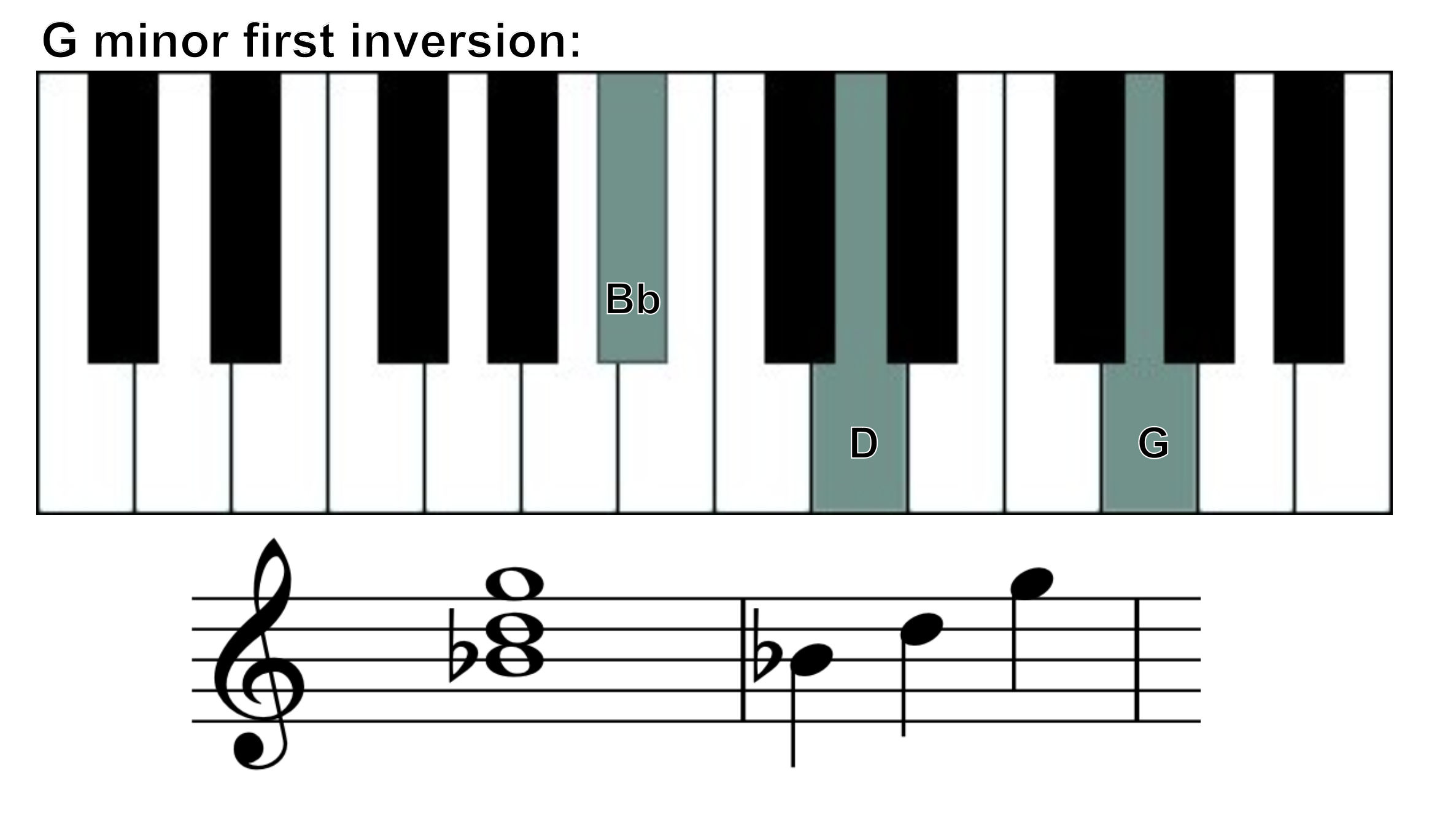
For the right hand, use these fingers:
- G – Fifth finger (5)
- D – Middle finger (3)
- Bb – Thumb (1)
For the left hand, use these fingers:
- G – Thumb (1)
- D – Third finger (3)
- Bb – Fifth finger (5)
How to play G minor second inversion?
To play the second inversion of the G minor piano chord, make D as the lowest note. Then add a G above it and finally add Bb as the top note. This inversion gives the chord a different sound and is often used to make chord variations and transitions nice and interesting.
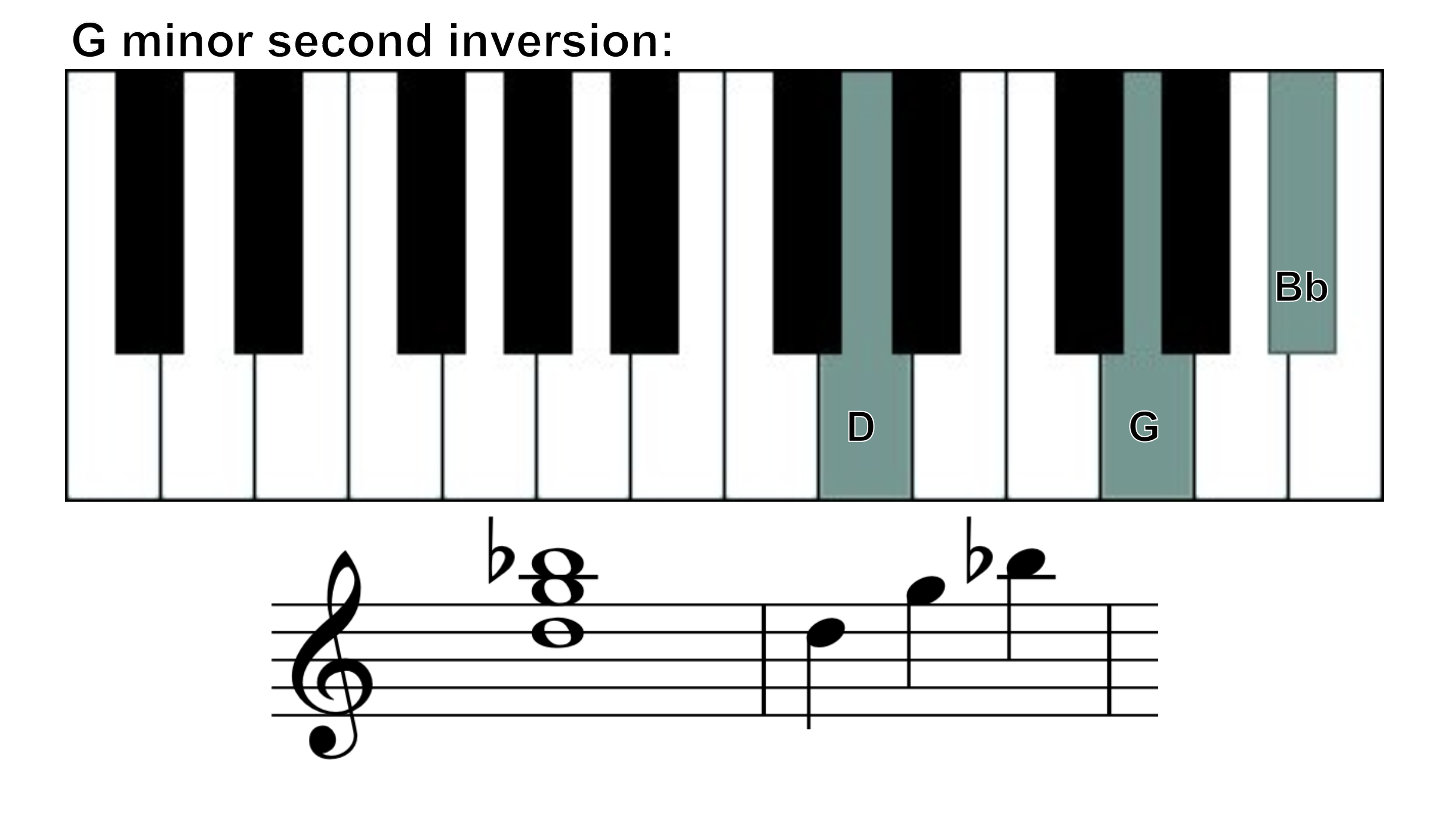
For the right hand, use these fingers:
- Bb – Fifth finger (5)
- G – Middle finger (3)
- D – Thumb (1)
For the left hand, use these fingers:
- Bb – Thumb (1)
- G – Second finger (2)
- D – Fifth finger (5)
Common chord progression in the key of G minor
G minor chord progressions are used all over the place, from rock and pop to jazz, classical and much more. G minor chord progressions often make use of chords like Gm, Bb, D and Eb. Here are some G minor chord progressions to get you started:
- Gm – D – Bb – F
- Gm – Eb – Bb – D
- Gm – Eb – Dm – D
- Gm – D – Eb – F
These sequences are a great way to put your newfound knowledge of piano chords to the test. To get to grips with these chord symbols and how to play them, have a look at Skoove’s tailor-made beginner chord progression courses.
Piano chords generator
💡 If you are reading this from a mobile device, rotate it to display the tool in full width.
1. Click on “Chords”
2. Choose the “Root” of the chord
3. Choose the “Chord qualities” (major, minor, etc.)
4. Click “Display”
Author of this blog post:
Matthew Dickman

With over a decade of experience in music education Matthew holds a BA in Music from Paul McCartney’s LIPA and an MA in Composition from the University of Salford. Mathew has developed a distinctive compositional voice and approach to music theory education through his research and work in the music industry. Matthew’s writing for Skoove combines experience from orchestral and media composition, and as a gigging jazz musician, to create a wholistic and accessible pedagogy for musicians of any level. Away from music, he enjoys reading and exploring nature to expand his horizons and knowledge contributing to his holistic teaching style.




